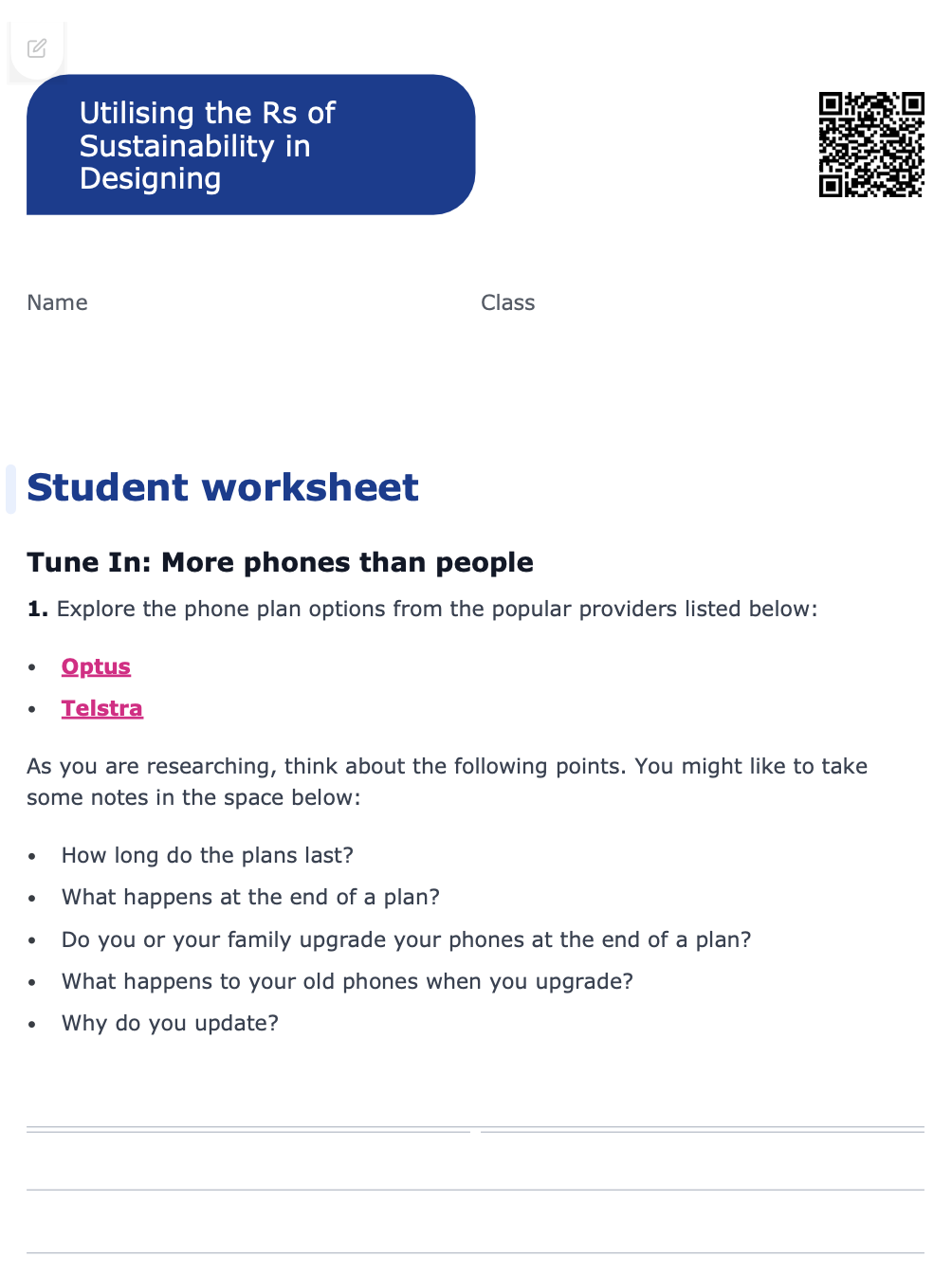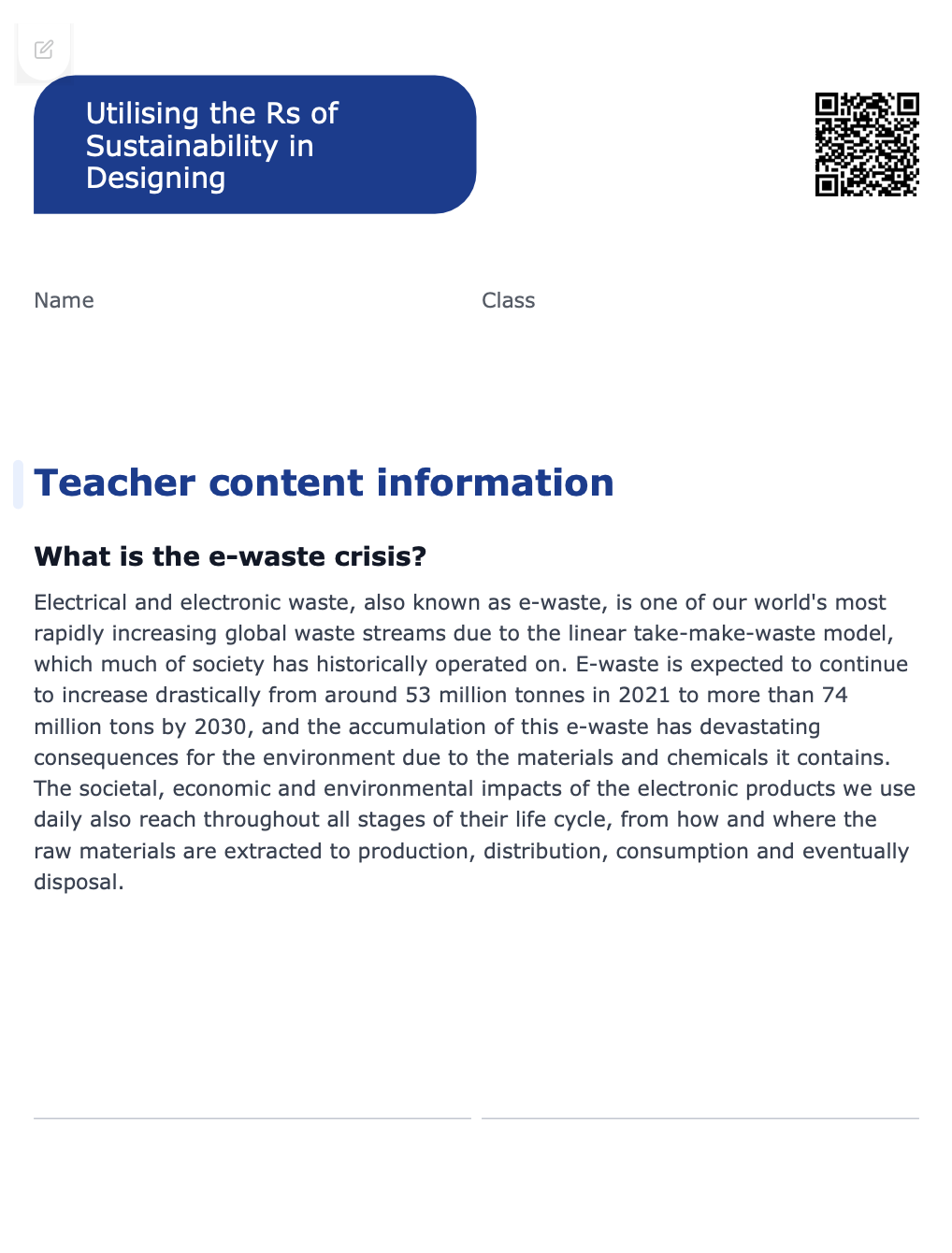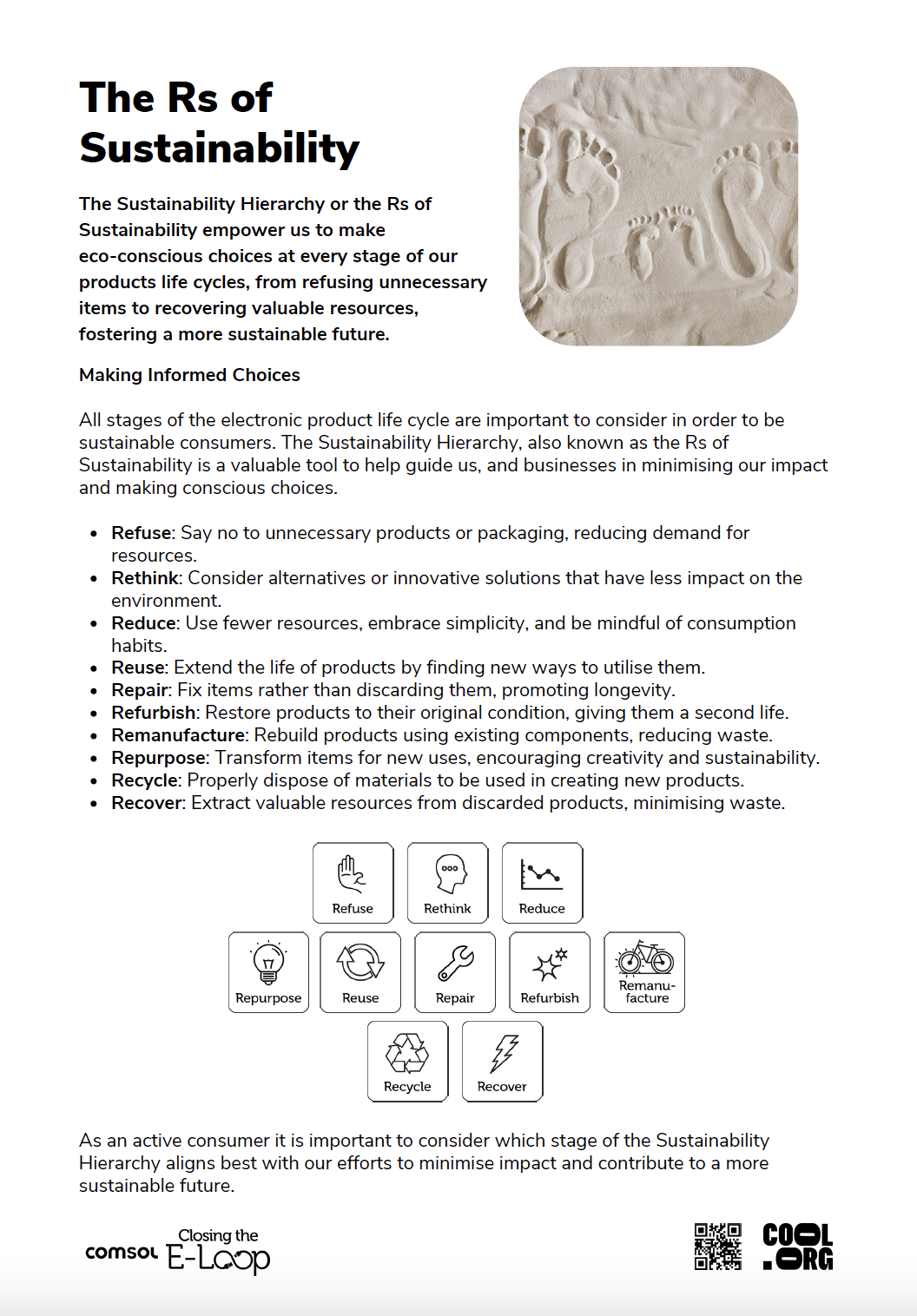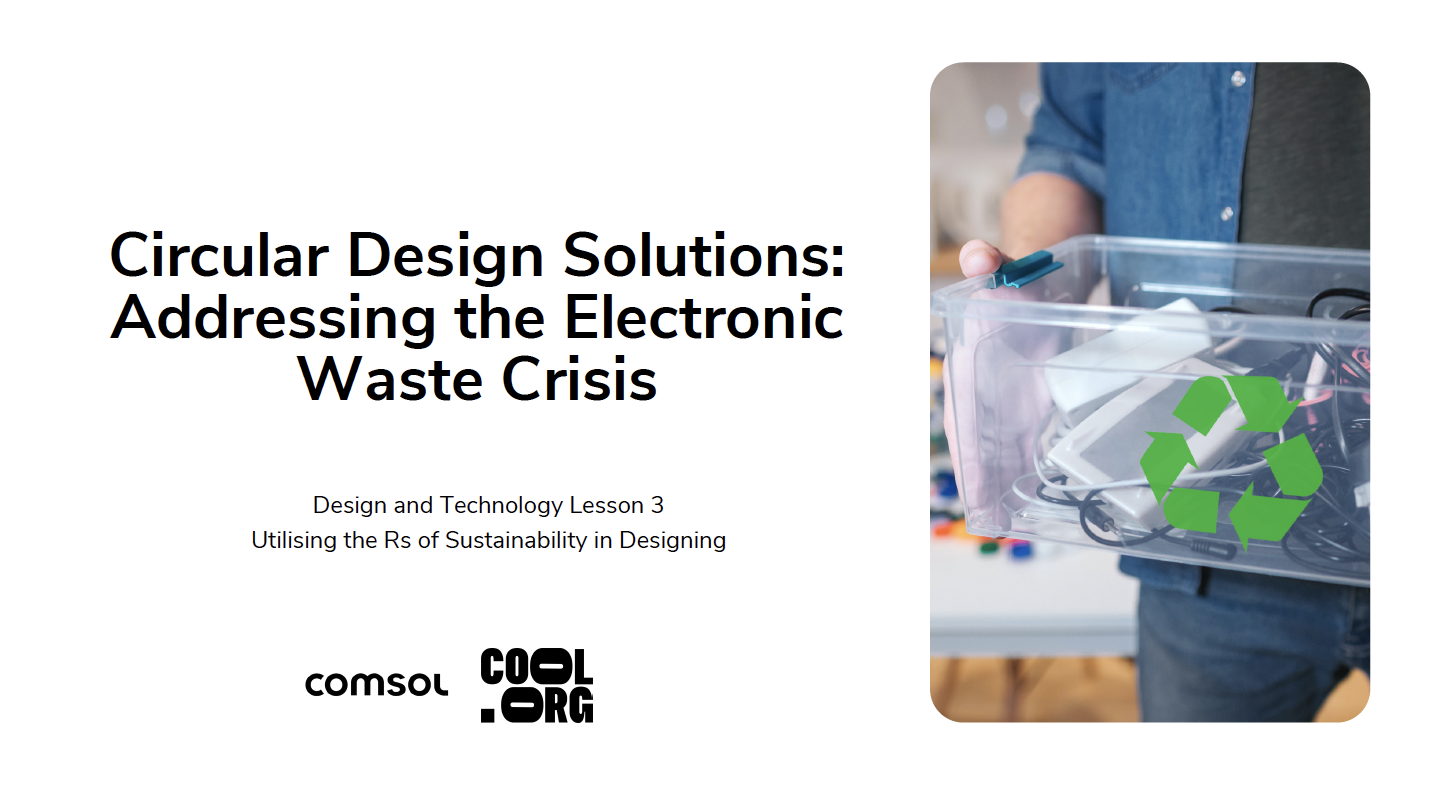Lesson summary
Students explore the Rs of sustainability and apply it to an existing product. They will also look at various case studies to see the circular economy in action, the value of existing resources and the opportunities that lie ahead with the upcycling of products and their materials. These activities are designed to educate and expose students to current innovations in this area so they can make their own judgements and understand the ethics behind creating a sustainable product. These products should consider a variety of stakeholders and the importance of considering the health and wellbeing of others during extraction, manufacture and distribution, consumption and end of life of a product.
Learning intentions:
Students will...
- learn about companies that utilise the circular economy model and understand the Rs of sustainability to make judgements and apply the circular economy to an existing product.
Success criteria:
Students can...
- learn about companies that utilise the circular economy model and understand the Rs of sustainability to make judgements and apply the circular economy to an existing product.
Lesson guides and printables
Curriculum links
Select your curriculum from the options below.
Lesson details
Skills
This lesson is designed to build students’ competencies in the following skills:
- collaboration
- problem-solving
- prototyping
- initiative
- global citizenship
- communication
Curriculum Mapping
Australian Curriculum (v9.0) content description:
- analyse how people in design and technologies occupations consider ethical, security and sustainability factors to innovate and improve products, services and environments AC9TDE10K01
- analyse and make judgements on how characteristics and properties of materials, systems, components, tools and equipment can be combined to create designed solutions AC9TDE10K06
General capabilities: Critical and Creative Thinking, Ethical Understanding, Literacy, Personal and Social Capability
Syllabus outcomes: DT5-3, DT5-3, DT4-5, DT5-5
Cross-curriculum priority: Sustainability
Relevant parts of Year 9 & 10 Design and Technology achievement standards: Students explain how people working in design and technologies occupations consider factors that impact on design decisions and the technologies used to produce products, services and environments. They identify the changes necessary to designed solutions to realise preferred futures they have described. They also evaluate the features of technologies and their appropriateness for purpose for one or more of the technologies contexts.
Level of teacher scaffolding: Medium - facilitate class discussion and note-taking for case studies.
Un Sustainable Development Goals
UN SDG 12: Responsible Consumption and Production
- Target 12.4: By 2020, achieve the environmentally sound management of chemicals and all wastes throughout their life cycle, in accordance with agreed international frameworks, and significantly reduce their release to air, water and soil in order to minimise their adverse impacts on human health and the environment
- Target 12.5: By 2030, substantially reduce waste generation through prevention, reduction, recycling and reuse.
Resources Required
- Device capable of presenting audio-visual recordings to the class such as an iPad, laptop and projector
- Lined paper
- Pen
Additional Info

This Closing the E-Loop unit has been developed in partnership with Comsol, a manufacturer, importer and distributor of electronics, who use a step-by-step approach to sustainability that aims to establish a sustainable, environmental and socially-supporting ecosystem for technology products and services. A key pillar of Comsol’s overarching framework is education. They believe that knowledge-sharing about the electronic waste crisis, sustainability and closed-loop solutions for electronic products provide opportunities for society to speed up the transition to a circular economy.
You can access all expert interviews and video content created for this unit through Vimeo. If you would like more information about the main topics and areas covered by these interviews, we have categorised them to make them easier to find and use in whatever context you see fit!






Welcome back!
Don't have an account yet?
Log in with:
Create your free Cool.org account.
Many of our resources are free, with an option to upgrade to Cool+ for premium content.
Already have an account?
Sign up with:
By signing up you accept Cool.org's Terms and Conditions(Opens in new tab) and Privacy Policy(Opens in new tab).